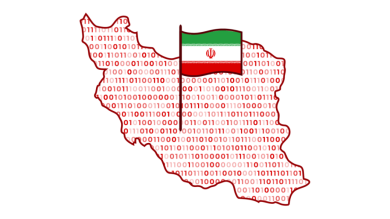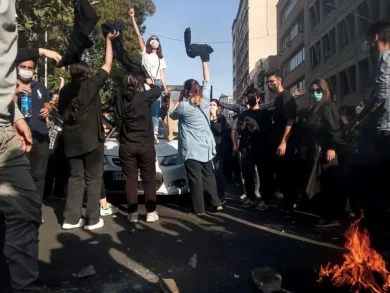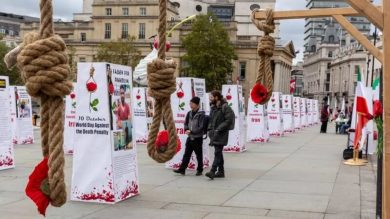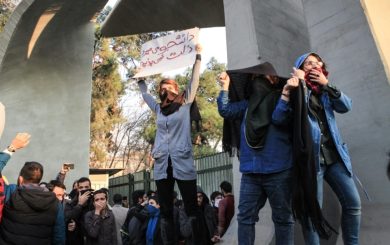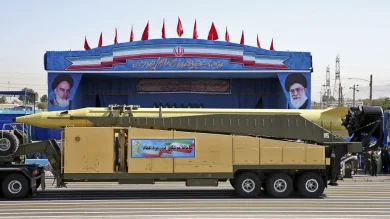Throughout history, women have often stood at the forefront of revolutions and social movements, driving transformative change. In Iran, this narrative is no different. For decades, Iranian women have resisted a regime that systematically curtails their rights. Today, they are leading a historic movement demanding freedom, equality, and democracy—a movement that will shape the future of a free Iran.
The “Women, Life, Freedom” movement, sparked by the death of Mahsa Amini in 2022, has become a global symbol of defiance against oppression. In a society where the Islamic Revolutionary Guard Corps (IRGC) enforces strict gender norms, Iranian women are rising to challenge state patriarchy, risking their lives for a vision of liberation that extends beyond gender.
This article explores why women will be central to the future of a democratic Iran, focusing on:
• The historical role of Iranian women in resistance.
• How gender oppression fuels women-led activism.
• Key movements and figures shaping the future.
• The global implications of Iran’s women-led revolution.
• How the world can support Iranian women in leading lasting change.
1. A History of Resistance: Iranian Women at the Forefront
A. The Legacy of Women’s Resistance in Iran
Iranian women have a long history of resistance. Even before the 1979 Islamic Revolution, women fought for:
• Education rights and suffrage.
• Legal reforms related to marriage and divorce.
• Representation in politics and civil society.
However, the Islamic Republic replaced these gains with draconian gender policies, mandating:
• Compulsory hijab laws.
• Gender segregation in public spaces.
• Severe restrictions on women’s participation in sports, arts, and politics.
Despite these setbacks, women’s activism persisted, with women continuously organizing, protesting, and speaking out against oppression.
B. Women’s Central Role in Contemporary Movements
In every major protest in Iran over the past two decades, women have been at the front lines:
• The 2009 Green Movement, where women protested electoral fraud and demanded democracy.
• The 2017-2018 economic protests, where women linked economic inequality to gender oppression.
• The 2022 uprising, sparked by Mahsa Amini’s death, where women’s bodily autonomy became the central issue.
The “Women, Life, Freedom” movement represents the culmination of years of resistance, making it clear that women’s rights are inseparable from Iran’s democratic future.
2. Why Women’s Leadership is Unstoppable
A. Gender Oppression Fuels Political Consciousness
The regime’s gender-based oppression has inadvertently made women the most politically conscious members of society. Everyday restrictions—from dress codes to legal inequalities—are constant reminders of the regime’s repressive nature.
Key Factors Driving Women’s Leadership:
• Compulsory Hijab: A symbol of state control, resisted by women daily.
• Economic Marginalization: Women face employment discrimination, pushing them toward political activism.
• Legal Discrimination: Unequal laws in inheritance, divorce, and custody motivate women to seek systemic change.
By fighting for their rights, Iranian women inherently challenge the regime’s legitimacy, making them natural leaders in the broader struggle for freedom.
B. Women’s Role in Reframing Iran’s Political Narrative
Iran’s ruling elite portrays opposition movements as foreign conspiracies. However, women-led movements undermine this narrative because:
• They are homegrown, addressing gender and human rights issues that affect all Iranians.
• Women’s demands for bodily autonomy and freedom of choice resonate across ethnic and class divides.
• Their leadership shows that Iran’s future lies in pluralism, equality, and democratic governance.
C. The Intersectionality of Women’s Struggles
Women in Iran are not just fighting gender oppression. They are also confronting:
• Ethnic discrimination, especially among Kurdish, Baluchi, and Arab women.
• Economic inequalities that disproportionately affect women.
• Political repression that targets women journalists, lawyers, and activists.
This intersectionality allows women’s movements to build broad coalitions, uniting various marginalized groups and making them uniquely positioned to lead a national transformation.
3. Women as Catalysts for Social and Political Change
A. The Power of Everyday Resistance
While mass protests grab headlines, much of the women-led resistance happens in everyday acts:
• Removing hijabs in public spaces, risking arrest and imprisonment.
• Dancing and singing in public, defying bans on female expression.
• Challenging gender segregation in schools, sports arenas, and workplaces.
These small, courageous acts chip away at the regime’s power, proving that women’s resistance is relentless and transformative.
B. Women Journalists and Digital Warriors
Women journalists and digital activists have become the eyes and ears of the movement:
• Masih Alinejad’s MyStealthyFreedom campaign encouraged women to share hijab-free photos, challenging the regime’s narrative.
• Journalists like Niloofar Hamedi, who broke the story of Mahsa Amini’s death, continue to risk their lives to report the truth.
• Social media platforms like Instagram and Twitter allow Iranian women to bypass state-controlled media, ensuring their voices are heard globally.
C. Leadership from Behind Bars
Even imprisoned women continue to lead the movement:
• Narges Mohammadi, despite being jailed, continues to write about human rights abuses and has become a global symbol of resistance.
• Nasrin Sotoudeh, a lawyer defending women who removed their hijabs, continues to speak out against gender apartheid even from prison.
Their leadership from behind bars demonstrates that even imprisonment cannot silence the demands for freedom.
4. The Global Impact of Iran’s Women-Led Revolution
A. “Women, Life, Freedom”: A Global Slogan
The slogan “Women, Life, Freedom” transcended Iran’s borders, resonating with:
• Feminist movements worldwide fighting gender-based violence and inequality.
• Human rights organizations advocating for democracy and freedom.
• Global protests from Berlin to New York, where Iranian women’s resistance became a rallying cry for freedom.
This global recognition ensures that Iranian women’s fight is now part of the international conversation on human rights.
B. Redefining Feminism in the Middle East
Iranian women’s resistance is redefining feminism in the region by:
• Challenging the notion that gender equality and Islamic governance are incompatible.
• Inspiring women’s movements in countries like Afghanistan, Lebanon, and Syria, where similar struggles exist.
• Proving that feminist movements in the Middle East can lead broad democratic transformations.
C. Shaping International Policy
Iranian women’s activism has forced governments worldwide to:
• Reevaluate foreign policies regarding Iran.
• Impose targeted sanctions on officials responsible for gender oppression.
• Support digital freedom initiatives to bypass the regime’s cyber surveillance.
5. How the World Can Support Iranian Women’s Leadership
A. Amplifying Their Voices
The international media must continue to:
• Highlight women’s stories from Iran.
• Feature Iranian women journalists, artists, and scholars who can articulate the movement’s goals.
• Counter the regime’s misinformation campaigns.
B. Sanctioning Oppressors
Governments should:
• Sanction the IRGC for its role in gender-based oppression.
• Target officials responsible for the abuse and imprisonment of women activists.
• Support international legal efforts to hold the regime accountable for human rights violations.
C. Supporting Digital and Physical Safe Spaces
• Provide digital tools like VPNs and encrypted apps to ensure secure communication.
• Offer asylum and protection to activists at risk.
• Establish platforms for Iranian women to share their stories and build international alliances.
D. Recognizing Women-Led Movements in Policy
• International policymakers must understand that women’s leadership is central to Iran’s democratic future.
• Support for Iranian civil society should prioritize women’s organizations and grassroots movements.
Conclusion: Women Will Lead Iran’s Future
Iranian women have proven, time and time again, that they are the driving force behind Iran’s push for freedom. Their resistance is not a separate women’s issue; it is the core of the nation’s democratic aspirations.
From Mahsa Amini’s tragic death to the unrelenting courage of Narges Mohammadi, Nasrin Sotoudeh, and Masih Alinejad, the message is clear:
Join Our Newsletter!
Stay informed with the latest updates, news, and ways to take action in the fight for justice and global security. Sign up now to get updates delivered straight to your inbox!

